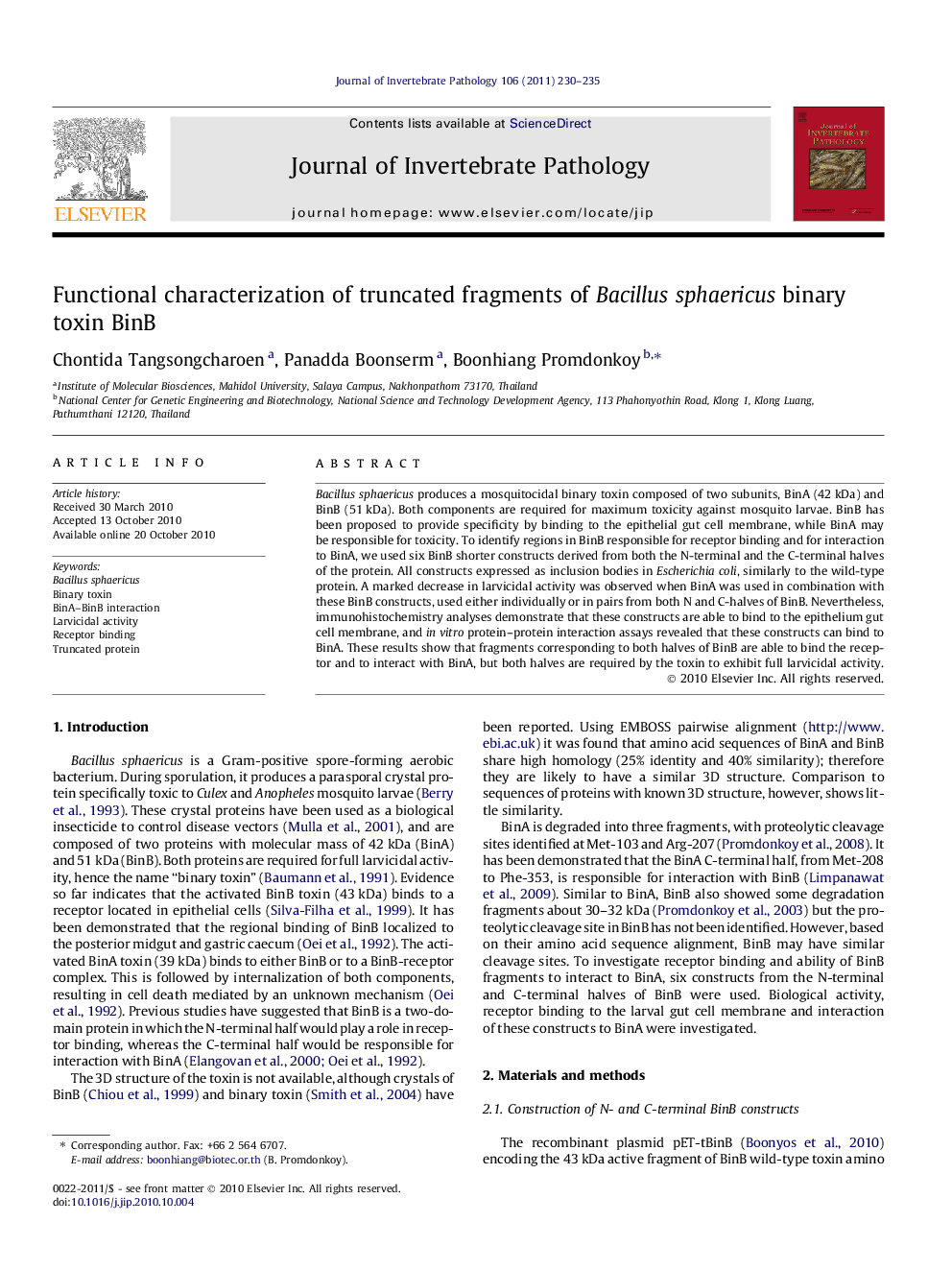| Article ID | Journal | Published Year | Pages | File Type |
|---|---|---|---|---|
| 4558088 | Journal of Invertebrate Pathology | 2011 | 6 Pages |
Bacillus sphaericus produces a mosquitocidal binary toxin composed of two subunits, BinA (42 kDa) and BinB (51 kDa). Both components are required for maximum toxicity against mosquito larvae. BinB has been proposed to provide specificity by binding to the epithelial gut cell membrane, while BinA may be responsible for toxicity. To identify regions in BinB responsible for receptor binding and for interaction to BinA, we used six BinB shorter constructs derived from both the N-terminal and the C-terminal halves of the protein. All constructs expressed as inclusion bodies in Escherichia coli, similarly to the wild-type protein. A marked decrease in larvicidal activity was observed when BinA was used in combination with these BinB constructs, used either individually or in pairs from both N and C-halves of BinB. Nevertheless, immunohistochemistry analyses demonstrate that these constructs are able to bind to the epithelium gut cell membrane, and in vitro protein–protein interaction assays revealed that these constructs can bind to BinA. These results show that fragments corresponding to both halves of BinB are able to bind the receptor and to interact with BinA, but both halves are required by the toxin to exhibit full larvicidal activity.
Graphical abstractProduction of N- and C-terminal truncated BinB fragments of Bacillus sphaericus.Figure optionsDownload full-size imageDownload as PowerPoint slideResearch highlights► Production and conformation of N- and C-terminal truncated BinB fragments. ► Mosquito-larvicidal activity of truncated BinB fragments. ► Binding of truncated BinB fragments to mosquito larval gut cell membrane. ► Interaction of truncated BinB fragments to BinA.
